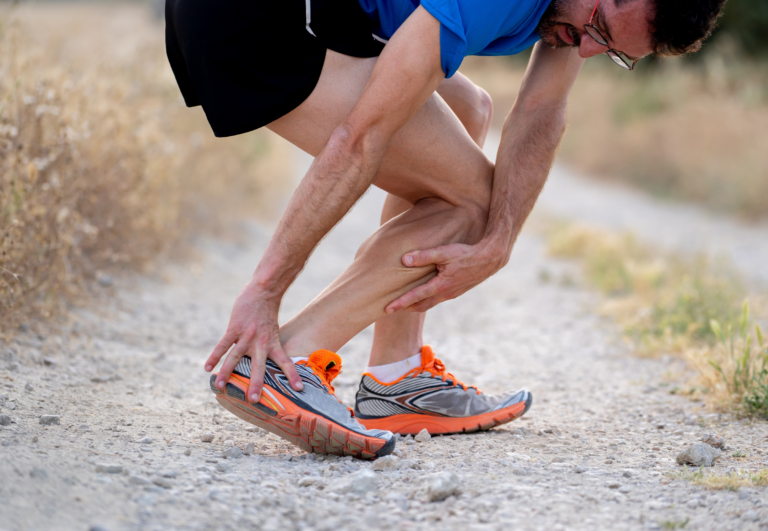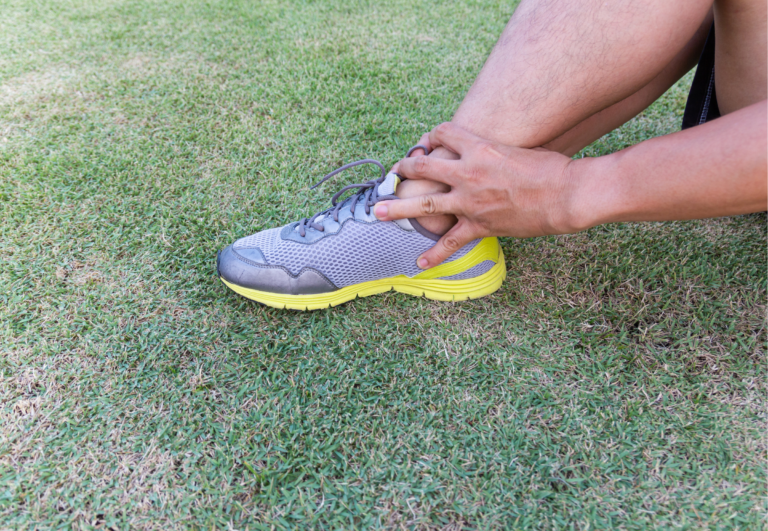Poles in Trail Running: Mastering Techniques and Exploring Advantages
As a UESCA certified running coach with extensive experience in trail running, I’ve come to appreciate the remarkable advantages that running with poles offers. Trail running with poles enhances efficiency on uphill segments and provides stability on rough terrain. The technique of using poles effectively is crucial to maximizing these benefits and involves proper timing and movement patterns that complement one’s running form.
Poles serve as a propulsive aid during ascents, allowing runners to engage their upper body and share the workload with the legs. This can result in better endurance over long distances and steeper climbs. Additionally, poles act as a stabilizing force during descents, reducing the impact on the joints and improving balance, which can be especially useful in technical or rocky sections of a trail.
When incorporating poles into your trail running routine, it is important to choose the right type of pole for the terrain and to adjust them to the correct length. This ensures better control and efficiency. With practice, the poles become a natural extension of a runner’s body, contributing to a more effective and enjoyable trail running experience.
Choosing the Right Poles for Trail Running
As a UESCA certified running coach, I understand that selecting the right poles for trail running can significantly improve performance. The correct poles help in saving energy on ascents and offer stability on technical terrain.
Different Pole Features
- Lightweight: When running, every ounce matters. Lightweight poles help to minimize fatigue. Most running poles are made from materials like aluminum or carbon fiber, with carbon being the lighter option.
- Collapsible: Runners need the ability to pack away their poles efficiently. Collapsible poles that can be quickly assembled and disassembled are ideal. Look for poles with a reliable locking mechanism to ensure they stay secure when in use.
- Grip: The grip should be comfortable for your hand size and wick away sweat. Foam or cork grips are commonly favored for their comfort and moisture control.
- Wrist Straps: Adjustable and padded wrist straps are crucial to avoid chafing and maintain a secure hold without over-gripping.
Tips: The pole tips should be made of a durable material like carbide to withstand different terrains. Some poles come with interchangeable tips for varied surfaces.
Choosing Poles Based on Terrain
- Flat Terrain: For mostly flat or slightly rolling terrain, choose poles that provide a balance between strength and weight. Minimalistic, lightweight poles usually suffice.
- Mountainous Terrain: When tackling steep inclines, sturdy poles with carbide tips offer better grip. For downhill segments, poles can provide stability and reduce strain on your knees.
- Variable Terrain: If running through variable terrain including muddy, rocky, or uneven paths, go for adjustable poles that can adapt to different lengths. This versatility can help maintain proper form and efficiency regardless of the terrain changes.
By considering these specific features, you can select the ideal poles that cater to your trail running needs, ensuring you get the most out of every stride on any terrain.
Techniques for Using Poles in Various Trail Conditions

In trail running, poles serve as pivotal tools for stability and efficiency across varying terrains. Mastering their usage is key for optimizing energy and maintaining balance.
Mastering Uphill Techniques
When facing a steep uphill, I recommend leaning forward slightly and using poles to match the natural rhythm of your steps. On steep uphill sections, plant the pole close to your leading foot for maximum propulsion. Focus on a shorter, more frequent poling pattern to maintain momentum without expending excessive energy.
- Uphill Pole Planting Technique
- Stance: Slight forward lean
- Pole Plant: Near the leading foot
- Cadence: Short, frequent pole plants
- Focus: Consistent rhythm with steps
Navigating Downhills with Poles
On descents, poles help control the pace while providing essential support for the joints. Extend your arms and plant the poles ahead to ensure stability and balance. Use the poles to absorb some of the impact and to keep a controlled and safe speed on tricky downhill trails.
- Downhill Poling Strategy
- Arm Extension: Moderate to reduce shock
- Pole Plant: In front of the body
- Impact Absorption: Use poles to manage impact
- Control: Maintain a prudent speed
Optimizing Pole Use on Flat Terrain
While poles may seem less necessary on flat terrain, they can still enhance running efficiency. I use a consistent, alternate pattern with the pole and opposite foot, resembling the natural arm swing. This enhances balance and can aid in maintaining a steady pace over longer distances.
- Flat Terrain Poling Technique
- Pattern: Alternate with opposite foot
- Pacing: Helps maintain consistent speed
- Balance: Poles provide additional points of contact
Training and Practice for Effective Pole Use
As a UESCA certified running coach and trail running expert, I advise incorporating pole training into your routine to maximize efficiency and technique on the trails. Mastery of poles can elevate your trail running, especially in ultramarathons and demanding trail races.
Incorporating Poles into Regular Training
In my experience, consistency is key when integrating poles into your training regimen. Start with familiar terrain and gradually introduce poles into your longer runs. Initially, this could mean carrying them without use, then using them for short intervals. This allows your body to adapt naturally to the added equipment without overwhelming your running form.
Frequency of Practice:
- 2-3 times a week: Carry poles during runs.
- After 2 weeks: Use poles during a fraction of your run.
- Increase gradually: Expand pole use as comfort grows.
Skill Practice for Different Trail Scenarios
Trail scenarios vary, so your pole skills should be adaptable. When facing steep inclines, practice using your poles powerfully to aid propulsion. On downhills, use poles to maintain control and balance, reducing impact on your legs. Practice in varied conditions to build confidence:
| Trail Scenario | Focus Area | Practice Tips |
|---|---|---|
| Steep Uphills | Power & Drive | Lean forward, plant poles ahead, and push. |
| Technical Descents | Control & Stability | Plant poles before steps to brace impact. |
| Flat Terrain | Rhythm & Timing | Use alternating pole planting to maintain a consistent stride. |
Regular, deliberate practice across different terrains will prepare you for the diverse conditions encountered in trail races and ultramarathons, ensuring that your pole usage is an asset rather than a hindrance.
Enhancing Performance with Poles
Using poles in trail running can lead to significant gains in both efficiency and overall performance. I’ll explain how proper pole usage boosts speed, power, endurance, and stability, which are crucial for tackling challenging terrains.
Improving Speed and Power
With the right technique, poles can contribute to a faster pace and increased power when trail running. Here’s how they can specifically enhance these areas:
- Speed: By using poles to propel myself forward during ascents, I leverage my upper body to complement my leg muscles, leading to a more rapid climbing pace.
- Power: Engaging my core and upper body when pushing off with poles creates a powerful force that propels me forward, reducing the workload on my legs and allowing for a stronger, more powerful stride.
Boosting Endurance and Stability
The use of poles also plays a significant role in preserving energy and providing stability, which is particularly useful over long distances and uneven ground:
- Endurance: By distributing the effort between my upper and lower body, poles help me conserve energy. This efficiency lets me maintain a consistent pace for longer periods without fatiguing my legs prematurely.
- Stability: Poles act as additional points of contact with the ground, which grants me extra stability on uneven trails. This steadiness protects against missteps and falls, which are common on unpredictable surfaces.
In both enhancing speed and power and in boosting endurance and stability, poles are a key tool in a trail runner’s arsenal. Proper use of trail running poles can transform the experience, harnessing energy more effectively and keeping the body more balanced during challenging runs.
Health and Safety Advantages of Using Poles

When incorporating poles into trail running, runners can gain health and safety benefits particularly in reducing impact on joints and enhancing balance. Let’s explore how to leverage poles effectively for these advantages.
Reducing Joint Impact and Risk of Injury
Using poles while trail running can significantly reduce the impact on joints. As I coach runners, I stress that proper use of poles can distribute the force from each footfall across four points of contact rather than two. This means there’s less stress on the knees, hips, and ankles, which can lower the risk of impact-related injuries.
- Impact Distribution: With each step, poles absorb a portion of the impact that would otherwise be absorbed entirely by the joints.
Ensuring Form and Balance to Prevent Falls
As a running coach, I instruct on how maintaining proper form with poles can lead to improved balance, particularly on challenging terrain. Whether ascending a steep mountain runner path or navigating tricky descents, poles provide extra contact points for stabilization. They act in a way similar to a running pack‘s stabilizing effect on gear, but for your body.
- Balance Assistance: Poles aid in maintaining a runner’s center of gravity, which can prevent slips and falls.
Utilizing poles is akin to a Nordic walking technique but adapted for the dynamic movements of trail running. It’s important to remember that when wearing a running vest or carrying a running pack, balance becomes even more critical, and poles can help counterbalance the load.






